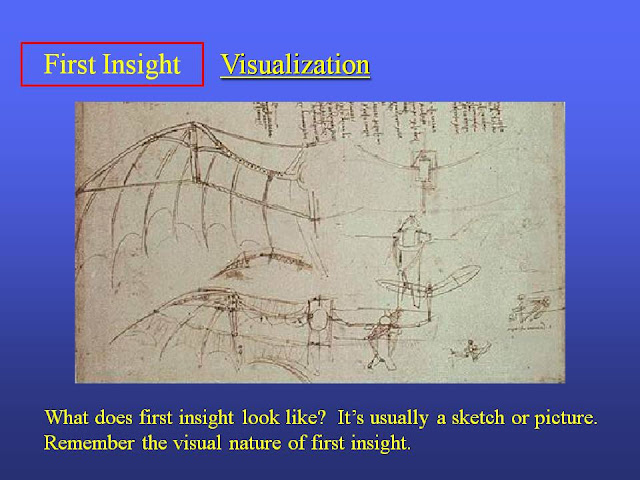About 15 years ago, I attended a course in Creative Thinking. The instructor asked us to release our inhibitions, to let random thoughts come into our minds. He emphasized that creative thoughts often appear when we are relaxed, daydreaming or in the shower. All of that true. But it misses the point about how to become a creative person.
This blog post is about the process of Creative Thinking. Creative Thinking can be learned, and it can be practiced. It is a set of very specific steps, in a specific order. This blog post is about those steps, and how to prepare for the creative moment (and what to do afterwards). Please take a tour, try some exercises, and practice the Creative Process.

Creativity is a deliberate process that clever people use to solve problems. Creativity is not taught in school; it is usually self-discovered. But it is clear that creative people have independently discovered the same process and are applying the same methods. Creativity can be learned, and it improves with practice.
Here is what I see in creative people. They work very hard. They are passionate about their subjects; they become experts; they use visualization and drawings; and they use specific thought processes to solve their problems.
Betty Edwards, author of “Drawing on the Right Side of the Brain”, and “Drawing on the Artist Within”, describes these steps in the creative process.
What does First Insight look like?
The other part of a first insight is reducing that visual insight to a question. A questioning attitude is important for developing first insights, and framing a question the right way is critical to its solution. This is our first example of alternating between visual and analytical processes.
What are you really trying to solve?
Start with the end in mind, and use visualization techniques and sketches to define it (visualization). Then transform the vision into a question or goal (analysis).


This blog post is about the process of Creative Thinking. Creative Thinking can be learned, and it can be practiced. It is a set of very specific steps, in a specific order. This blog post is about those steps, and how to prepare for the creative moment (and what to do afterwards). Please take a tour, try some exercises, and practice the Creative Process.

Creativity is a deliberate process that clever people use to solve problems. Creativity is not taught in school; it is usually self-discovered. But it is clear that creative people have independently discovered the same process and are applying the same methods. Creativity can be learned, and it improves with practice.
Here is what I see in creative people. They work very hard. They are passionate about their subjects; they become experts; they use visualization and drawings; and they use specific thought processes to solve their problems.
Creativity is equal parts analysis and imagination. Through the steps of the creative process, you will alternate your focus of your thinking from imaginative to analytical several times.
We will contrast Plato—truth is found in the mind and imagination, with Aristotle—truth is found through objective observation. Creative people know that both are required.
What does First Insight look like?
It’s usually a picture. I like this sketch of a flying machine by Leonardo da Vinci, because it has the character of a frantic idea scribbled on the back of a bar napkin.
The other part of a first insight is reducing that visual insight to a question. A questioning attitude is important for developing first insights, and framing a question the right way is critical to its solution. This is our first example of alternating between visual and analytical processes.
What are you really trying to solve?
Start with the end in mind, and use visualization techniques and sketches to define it (visualization). Then transform the vision into a question or goal (analysis).
Feynman's diagrams, which he developed as a personal visualization tool, became the foundation of his work for which he received the Nobel prize in physics.


People in artistic pursuits also practice a kind of data saturation, as appropriate to each field. A jazz musician must practice hundreds of musical patterns, modes, chords, and arpeggios, becoming fluent in all 12 scales. A ballet dancer learns the language of gesture and form; a painter studies the masters and practices technique and composition. For writers, it is said that the first million words are practice.





















































